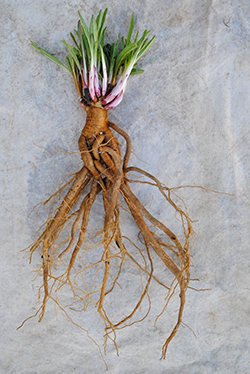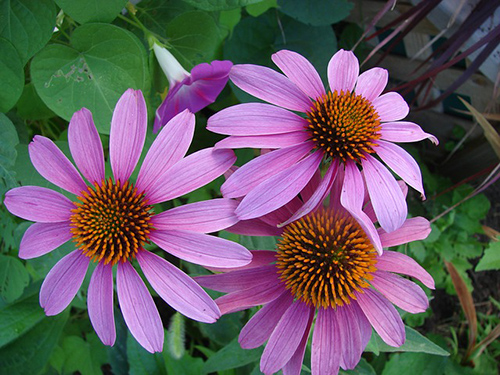Contents
The early natives of Nebraska and Missouri used the echinacea root to heal infected wounds and snake bites. By the late 19th century, Dr. Meyer, a medical researcher, discovered its properties while living among the Indians. From then onwards, echinacea has been the focus of many scientific studies, which revealed the many virtues of this plant and its active processes.
- Organic Goodness: Experience the pure benefits of our dried echinacea root, free from artificial ingredients. It supports your health naturally, ensuring the highest standards of purity.
- Premium Echinacea Angustifolia: Sourced from the finest echinacea plants, the roots are expertly cut and sifted to maximize potency and ease of use, ensuring a powerful product for your needs.
Today, echinacea is used in several pharmaceutical preparations, and it is one of the plants about which more scientific studies have been performed.

Echinacea Root Scientific Facts
- French: Rudbeckie a feuilles etroites.
- Spanish: Equinacea.
- Environment: Native to North America, it grows on plains and sandy river banks, mainly in the great Mississippi River Valley. It is cultivated as a medicinal plant in Central Europe.
- Description: Plant of the Compositae family, whose hollow stems grow up to one meter high. It has elongated, hairy, narrow leaves and mauve flowers that grow on the stems’ tip and are quite exuberant.
- Parts of the plant used medicinally: The root.
Echinacea Root Benefits
The composition of the echinacea root is highly complex. Many active substances have been identified and could be classified according to the following guidelines:
- Essential oil: It consists of more than 20 components, among which the geranyl-isobutyrate is vital. It also contains terpenes (pinene, thujone, and others) and cys-1.8-pentadecadien, a substance that, in vitro, has oncolytic properties (can destroy tumoral cells). The essential oil seems to be responsible for immune stimulation.
- Echinacoside: A glycoside formed by glucose and rhamnose, echinacoside has a substantial antibiotic effect on several germs, especially golden staphylococcus.
- Polyacetylene, which kills bacteria and fungi.
- An inhibiting factor for hyaluronidase is an enzyme many bacteria produce. Hyaluronidase breaks hyaluronic acid (a primary component of the connective tissue), allowing the spread of pathogenic germs. By inhibiting this enzyme, the echinacea root stops the spread of germs throughout the tissue.
- Resin, inulin, and vitamin C.
As frequently happens in phytotherapy, the plant extract (of its root, in this case) is much more active than any of its active components when isolated. This is due to the interaction among its components when some of them enhance the actions of others. Also, there may be some unidentified active components.
The basic properties of the echinacea root are the following:

- Immunostimulant: It increases defense mechanisms, which are general non-specific stimulations in humoral activity (antibody production, activation of the complementary system) and cell immunity (phagocytosis: destruction of microorganisms by leukocytes). It increases the number of leukocytes in the blood.
- Anti-inflammatory: It prevents the progression of infections by inhibiting the enzyme hyaluronidase produced by many bacteria species. It also promotes the growth of granulation tissue, which is responsible for wound healing; it stimulates the reproduction of fibroblasts, essential cells of the connective tissue, and is responsible for tissue regeneration and scar formation.
- Antitoxic: It stimulates the purifying process of the liver and kidneys, through which toxic and foreign substances flowing into the blood are neutralized and eliminated.
- Antibiotic and antiviral: This action has been experimentally proven in vitro (in a test tube). However, the property of stimulating defenses is more important in vivo (in the body).
- Anticancerous: It can destroy malignant cells (an effect only proven in vitro).
Hence, the clinical applications of this plant are the following:

- Infectious diseases in general. The best antibiotic will fail when our body’s defenses do not cooperate in the fight against infection. Echinacea acts on the field, that is, on the body suffering from the disease rather than destroying the causative agents. This means its action is slower and perhaps less spectacular than antibiotics; however, it often renders the best mid- and long-term results. It has preventive and healing actions and lacks the side effects of antibiotics.
Echinacea root is recommended, among other cases, for children’s infectious diseases, influenza, sinusitis, tonsillitis, and acute and chronic respiratory infections, especially when these are frequent (preventive effect); for typhoid fever; in all septicemia (blood infection) for any reason (gynecological, urinary, biliary, etc.).
It has been applied in the treatment of AIDS, combined with other remedies, with promising results, such as:
- Skin lesions: Due to its anti-infectious, healing, and tissue regenerative properties, it is recommended for abscesses, infected wounds or burns, folliculitis, infected acne, skin ulcers, including varicose ulcers, psoriasis, dermatosis, and eczema. In these cases, it is applied both internally and externally.
- Snake and insect bites: Due to its antitoxic properties, it neutralizes (partially) poison and prevents it from spreading. It must also be applied internally and externally.
- Prostate afflictions: It reduces prostate congestion and also prevents frequent urinary infections that occur due to incomplete bladder emptying.
- Malignant tumors: Though its antitumor properties have only been experimentally proven in vitro, there are enough reasons to think this plant can benefit cancerous tumors. While waiting for new research, it must be used only as a complementary treatment.
Organic echinacea root is among the most effective lymphatic and blood cleansers of all the herbs tolerated by the entire system. The plant is not toxic. However, it can cause nausea and mild dizziness in some individuals. Combining it with small amounts of licorice root and mixing the echinacea root tea with two to three dates can reduce those systems.
Echinacea root can be used internally and externally for tonsilitis, skin diseases, infections, gangrene, boils, bad breath, and acne. It is also thought to be beneficial in treating poison oak and ivy, venomous bites from snakes, insects, and other animals. It is used for painful surface swellings and open wounds.
Echinacea can treat all chronic and acute viral and bacterial infections, venereal disease, uremic poisoning, lymphatic congestion, leukopenia (reduction in blood leukocytes), intestinal antiseptic, inflammation of mammary glands, fevers, blood purifier, bladder infections, blood poisoning. Combined with myrrh, it can purge the body of typhoid fever, abscess formations, and pus. The plant’s rootstock can help dispel flatulence because it aids digestion and is a tonic.
Echinacea root is a fantastic antibiotic, ranking with red clover and goldenseal. To treat acute conditions, it must be taken every hour or two as a tincture (1 teaspoon) or a powder in 2 #00 capsules. Echinacea used externally is the perfect remedy for acne.
Note: Abstain from using the rootstock once its odor is lost.
Warning: Use this herb with extreme caution if you are pregnant or allergic to ragweed or plants in the sunflower family. It stimulates the immune system; therefore, do not take it for extended periods if you suffer from autoimmune disorders. Take it only one week at a time.
Cancer Treatment

The use of echinacea corrects leukopenia (a decrease in the number of leukocytes) and reduces the defenses that radiation or chemical therapy for cancer treatment causes in the human body.
Purple Echinacea
Purple echinacea (Echinacea purea Moench.) differs from common echinacea (Angustifolia) in the color of its red flowers. However, both species have the same medicinal applications.
How to use Ecninacea
- Decoction
- Pharmaceutical preparations: Echinacea is usually presented in several forms: fluid extract, tincture, capsules, etc. In any case, carefully follow the instructions.
- Compresses with the same decoction are used internally.
- Lotions with the liquid of the decoction, as mentioned above.
- Pharmaceutical preparations: creams, ointments, and others.
Decoction: Simmer for five to fifteen minutes and take one tablespoon three to six times daily. Tincture: Take thirty to sixty drops three to six times a day. Fluid extract: Take ½ to one teaspoon three to six times daily. Powder: Take two to five #0 capsules (15 to 30 grains) three to six times daily.
DISCLAIMER: All content on this website is presented solely for educational and informational objectives. Do not rely on the information provided as a replacement for advice, diagnosis, or treatment from a qualified medical expert. If you are pregnant, nursing, or have any preexisting medical concerns, talk to your doctor before using any herbal or natural medicines.
REFERENCES
- George D. Pamplona-Roger, M.D. “Encyclopedia of Medicinal Plants.” George D. Pamplona-Roger, M.D. Encyclopedia of Medicinal Plants. Ed. Francesc X. Gelabert. vols. 2 San Fernando de Henares: Editorial Safeliz, 2000. 755, 756, 757. Print.[echinacea root]
- Vance Ferrell Harold M. Cherne, M.D. The Natural Remedies Encyclopedia [Book]. – Altamont, TN: Harvestime Books, 2010. – Vol. Seventh Edition: 7: pp. 156.
- Mayo Clinic: https://www.mayoclinic.org/diseases-conditions/common-cold/diagnosis-treatment/alternative-medicine/scc-20351613
- Mount Sinai: https://www.webmd.com/vitamins/ai/ingredientmono-981/echinacea
- University of Maryland Medical Center: https://www.umms.org/ummc
Last update on 2025-06-04 / Affiliate links / Images from Amazon Product Advertising API





